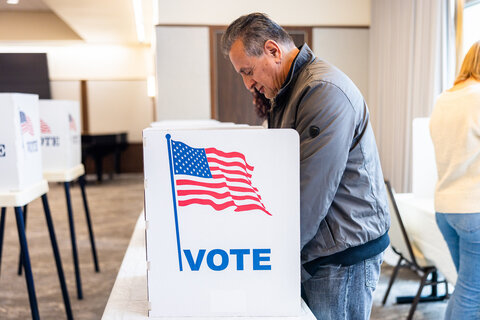Today the Supreme Court rightly held that the police cannot shield themselves from liability for a malicious prosecution merely by tacking on a far less serious charge.
The Fourth Amendment guarantees that “no Warrants shall issue, but upon probable cause.” If an arrest warrant is issued without probable cause, the person arrested can sue for “malicious prosecution.” Jascha Chiaverini alleges that he was maliciously prosecuted when the police arrested him for money laundering on the basis of a fabricated confession. Yet the Sixth Circuit held that Chiaverini could not sue for malicious prosecution because he was also arrested for two misdemeanors. The Sixth Circuit held that probable cause for these crimes categorically barred Chiaverini’s claim, even if he would not have been arrested on the basis of the misdemeanors alone.
Justice Elena Kagan’s opinion for a 6–3 majority rejected that reasoning, making clear that malicious prosecution claims must be evaluated individually on a charge‐by‐charge basis. As Justice Kagan explained, both Supreme Court precedent and the history of malicious prosecution claims support a charge‐by‐charge approach.
Looking to the Fourth Amendment, Justice Kagan emphasized the same point that we at the Cato Institute made in our amicus brief supporting Chiaverini: a single false charge can cause an arrest to last longer than it otherwise would, even when that false charge is mixed with legitimate charges. As Justice Kagan put it for the Court, “if an invalid charge—say, one fabricated by police officers—causes a detention either to start or to continue, then the Fourth Amendment is violated.”
To show why this is true, Justice Kagan provided a helpful example: “A person is detained on two charges—a drug offense supported by probable cause and a gun offense built on lies. The prosecutor, for whatever reason, drops the (valid) drug charge, leaving the person in jail on the (invalid) gun charge alone. The inclusion of the baseless charge—though brought along with a good charge—has thus caused a constitutional violation, by unreasonably extending the pretrial detention.”
And to further strengthen this point, Justice Kagan also looked to the history of “malicious prosecution” claims during the time when citizens were first given the right to sue the government for constitutional violations. Even before these claims were explicitly tied to the Fourth Amendment right to be free from unreasonable seizures, courts consistently applied a charge‐by‐charge rule. For example, the Supreme Court of Missouri held in 1885 that a groundless charge can “constitute a valid cause of action” even when “coupled with others which are well founded.”
Given that the Sixth Circuit’s rule was completely unsupported and that “the question is not close,” there was a strange quirk in how the case was argued. As Justice Kagan put it, “a funny thing happened on the way to this Court,” because even the police officers decided not to defend the Sixth Circuit’s approach. No one defended the Sixth Circuit, and the parties instead “found a substitute ground of disagreement, involving the element of causation.”
Specifically, the police officers disagreed with Chiaverini on how a court should decide whether a false charged mixed with other valid ones had inflicted a Fourth Amendment injury. The dispute centered on whether a false charge inherently taints the arrest, whether a court must examine if the charge in fact lengthened the arrest, or whether a court must dismiss the claim so long as the valid charges could have justified the length of the arrest. But as Justice Kagan explained, “That new dispute is not now fit for our resolution” because “it was not fully briefed” and “the court below did not address the matter.” The Court thus left the causation question to be decided by the Sixth Circuit when it reevaluates the case.
Justices Clarence Thomas and Neil Gorsuch each dissented (with Justice Samuel Alito joining Thomas’s dissent), but their objections were more fundamental than the question at issue in this case. The dissenting justices objected to the Court’s choice in an earlier decision to house malicious prosecution claims in the Fourth Amendment.
Justice Thomas argued that malicious prosecution claims are a poor fit for the Fourth Amendment. He stressed that the Fourth Amendment focuses on the objective unreasonableness of a seizure, whereas malicious prosecution claims focus on the subjective bad faith of government actors (and traditionally could be triggered by charges even when they did not result in arrest). Justice Gorsuch voiced similar concerns, suggesting that the Fourteenth Amendment’s guarantee of due process might be a better fit for the claim than the Fourth Amendment. While these concerns are worth taking seriously, none of the dissents defended the Sixth Circuit’s approach on the question presented.
This case is not over, as Chiaverini must now go back to the Sixth Circuit and show that he was harmed by the false charge. But the Supreme Court’s decision is an important precedent that will put an end to the Sixth Circuit’s misguided rule. Under the Sixth Circuit’s approach, police officers had the perverse incentive to add as many charges as they could upon arrest, to shield themselves from potential liability. Now police officers across the country are on notice that each and every criminal charge must be individually supported by probable cause.




